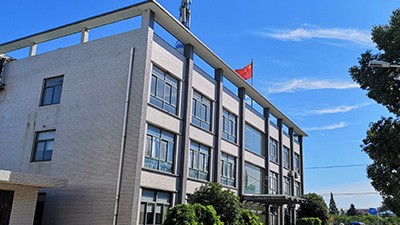Friction dampers were born in the late 1970s. After the concept of structural control was proposed in 1972, scholars at home and abroad began to systematically develop friction dampers. For more than 40 years, Scholars at home and abroad are mainly committed to the development and research of four major types of friction dampers (friction energy dissipation node, plate friction damper, tube friction damper and composite friction damper) and apply them to new projects and seismic retrofitting of existing buildings.
Since ancient times, earthquakes have seriously affected the survival and development of human beings. The time, location and intensity of earthquakes have great randomness and unpredictability. People can not prevent earthquakes from occurring, but can only rely on their own technical means to prevent earthquakes and reduce various losses caused by them. It is often uneconomical, or even unrealistic, to require the structure not to be damaged under strong earthquakes [11 According to traditional seismic methods such as strengthening the strength, stiffness and ductility of the structure itself to resist earthquake action, which will not only directly increase the construction cost, but also make it difficult to repair the damage caused by strong earthquakes.
The damping devices (such as dampers and isolation pads) are arranged in the structure to effectively and reasonably resist earthquakes through friction, bending, elastic-plastic hysteretic deformation and other energy dissipation methods. The structure and the arranged damping devices jointly bear the earthquake action, so that the damping devices dissipate the energy input from the earthquake before the structure. If the earthquake energy is too large, it will be destroyed before the structure, thus reducing the damage of the main structure, so as to achieve the purpose of vibration reduction. Compared with the previous seismic method of passive energy dissipation based on the strength of the structure itself, it is a proactive method to set up non structural members to reduce the energy in the input members
Principle of passive structure control
The process of passive control (such as base isolation, energy dissipation and shock absorption) only depends on the interaction between structures and components, and between structures and auxiliary systems to consume vibration energy, without external energy and the interference of external information of the structure, so as to achieve the purpose of controlling structural response [3]
Passive control is a simple and practical damping method, so it is commonly used in current civil engineering practice
From the perspective of energy, the methods to reduce structural vibration can be roughly divided into the following categories:
1) Cut off the energy input structure or reduce the energy input
2) Transfer the vibration energy of the controlled structure to other auxiliary structures
3) The damping energy dissipation mechanism of the reinforced structure consumes the vibration energy of the structure:
4) Change the natural vibration characteristics of the system to avoid resonance effect
5) Introduce external energy to offset the original vibration energy of the structure. All vibration reduction methods are based on one or more of the above methods. The common form of the third method is to set damping energy dissipation devices on buildings. The common method is to design structural supports, shear walls, connectors, etc. into energy dissipation components, or use friction dampers, metal dampers, viscous dampers The vibration energy of the input structure, such as viscoelastic dampers, reduces the damage to the structure. Click to view the structure and working principle of friction damper


 Specializing in the development, research and production of seismic mitigation and isolation technology, we provide customers with integrated solutions for the design, testing, manufacturing, inspection and certification of viscous dampers.
Specializing in the development, research and production of seismic mitigation and isolation technology, we provide customers with integrated solutions for the design, testing, manufacturing, inspection and certification of viscous dampers.
 With the spirit of craftsmanship, we strive for perfection to ensure high-quality and reliable products.
With the spirit of craftsmanship, we strive for perfection to ensure high-quality and reliable products. The viscous dampers produced by the company are widely used in building engineering, steel structures, bridges and other fields due to their excellent wind resistance, seismic resistance and economy.
The viscous dampers produced by the company are widely used in building engineering, steel structures, bridges and other fields due to their excellent wind resistance, seismic resistance and economy. Respect customers, understand customers, constantly exceed customer expectations, provide better products and services, and make customers always partners.
Respect customers, understand customers, constantly exceed customer expectations, provide better products and services, and make customers always partners.

